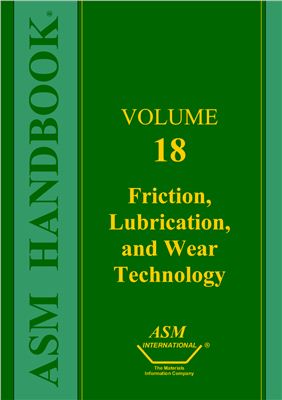ASM Inteational, 2002, 1879 p.
Friction, lubrication, and wear (FL&W) technology impacts many aspects of daily life, from the wear of one's teeth to the design of intricate, high-speed bearings for the space shuttle. Nearly everyone encounters a FL&W problem from time to time. Sometimes the solution to the problem is simple and obvious--disassembling, cleaning, and relubricating a door hinge, for example. Sometimes, however, the problem itself is difficult to define, the contact conditions in the system difficult to characterize, and the solution elusive. Approaches to problem-solving in the multidisciplinary field of tribology (that is, the science and technology of FL&W) often present a wide range of options and can include such diverse fields as mechanical design, lubrication, contact mechanics, fluid dynamics, surface chemistry, solid-state physics, and materials science and engineering. Practical experience is a very important resource for solving many types of FL&W problems, often replacing the application of rigorous tribology theory or engineering equations. Selecting "the right tool for the right job" was an inherent principle in planning the contents of this Volume.
Friction, lubrication, and wear (FL&W) technology impacts many aspects of daily life, from the wear of one's teeth to the design of intricate, high-speed bearings for the space shuttle. Nearly everyone encounters a FL&W problem from time to time. Sometimes the solution to the problem is simple and obvious--disassembling, cleaning, and relubricating a door hinge, for example. Sometimes, however, the problem itself is difficult to define, the contact conditions in the system difficult to characterize, and the solution elusive. Approaches to problem-solving in the multidisciplinary field of tribology (that is, the science and technology of FL&W) often present a wide range of options and can include such diverse fields as mechanical design, lubrication, contact mechanics, fluid dynamics, surface chemistry, solid-state physics, and materials science and engineering. Practical experience is a very important resource for solving many types of FL&W problems, often replacing the application of rigorous tribology theory or engineering equations. Selecting "the right tool for the right job" was an inherent principle in planning the contents of this Volume.

